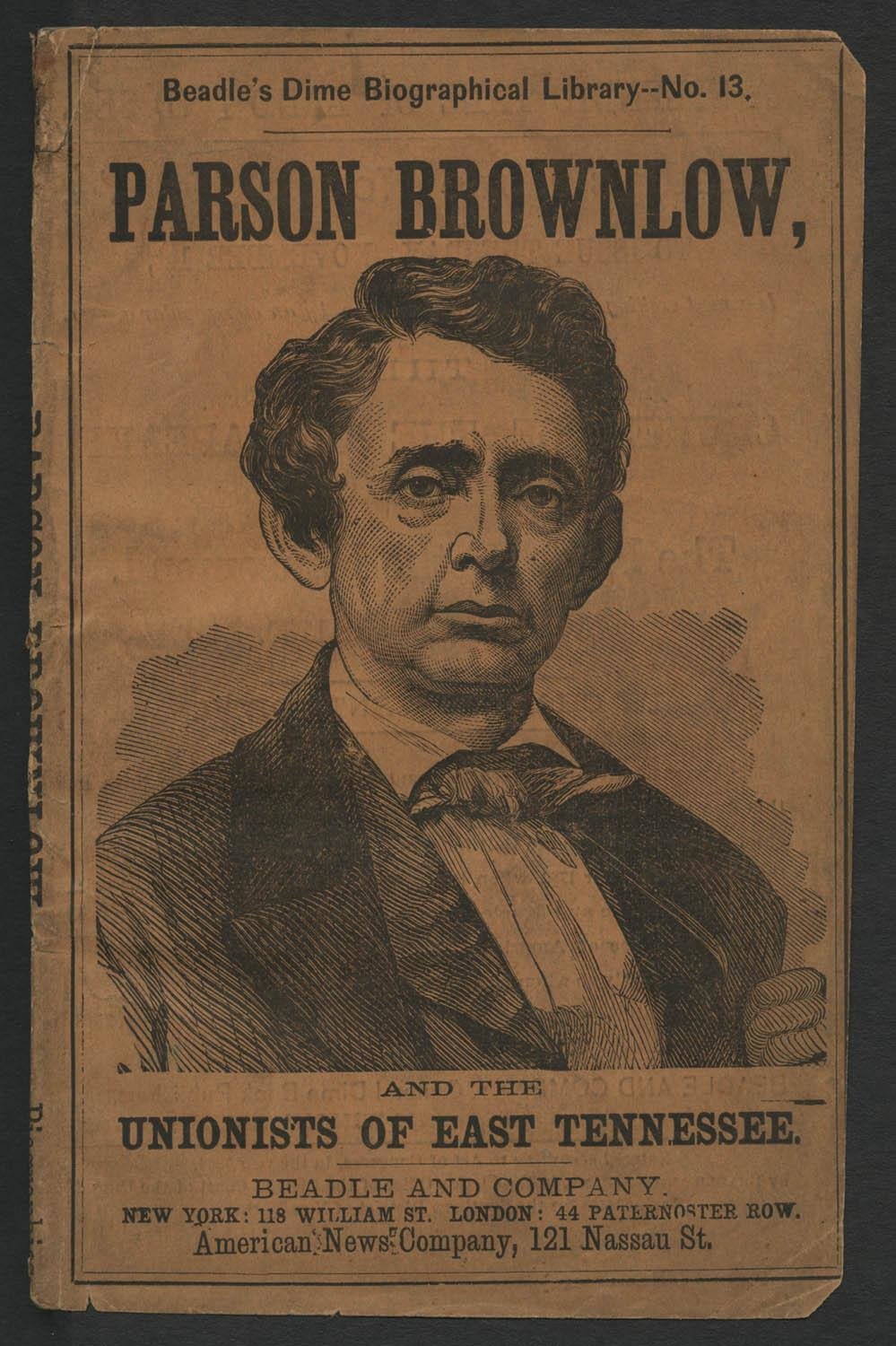Legislators spat on his portrait
jmp.press@gmail.com
Mark Powell is on family leave. This columb is reprint from January 2016.
Folks in the Tennessee disagree about many things. Are you a Vanderbilt fan, or do you root for the University of …
This item is available in full to subscribers.
Subscribe to continue reading. Already a subscriber? Sign in
Get 50% of all subscriptions for a limited time. Subscribe today.
Please log in to continueNeed an account?
|
Legislators spat on his portrait
jmp.press@gmail.com
Mark Powell is on family leave. This columb is reprint from January 2016.
Folks in the Tennessee disagree about many things. Are you a Vanderbilt fan, or do you root for the University of Tennessee? Do you vote for the Democrats, or the Republicans?
But people there unanimously agree on one thing: Parson Brownlow is the most hated man in Tennessee history. Nearly 150 years after his death, just mentioning his name can trigger a firestorm.
He passionately despised (in no particular order) Baptists, the Devil, Democrats, Confederates, Andrew Johnson, and basically anyone who disagreed with him. And he fought them all with every ounce of energy he possessed.
William Gannaway Brownlow was born in Virginia in 1805. Orphaned at age 10, he was passed from one relative to another until he became a carpenter at 18. A couple of years later, he attended a camp meeting where he “Saw the Light” and had a spiritual conversion. He put down his hammer and saw, put on the cloth and offered his divine services to the Methodist Church, acquiring the nickname he would carry for the rest of his life: “Parson.”
He was sent to churches in North Carolina, where he spent most of his time fighting with fellow Protestant ministers. When that didn’t work out, he was ordered to South Carolina, where he published a 70-page pamphlet that attacked Baptists so viciously, the locals demanded he be hanged,making him beat a fast path back to Virginia.
With his fiery style, a friend suggested he start a newspaper supporting the Whig political party. Brownlow jumped into his new career. He was as divisive as ever: folks either loved or hated him. In 1840, he ran into a former Whig who had switched to the Democrats. They argued; Parson Brownlow beat the guy with a cane, who in turn shot the editor in his thigh.
In 1845, he ran for Congress against future U.S. president Andrew Johnson. It was as nasty as you would expect, with Democrat Johnson winning. That sparked a burning hatred for Johnson, which Parson Brownlow nurtured till the day he died.
Settling in Knoxville, he began a relentless round of savage attacks on his political and sectarian opponents. He caused a controversy in 1856 when he published a book firing back at a Baptist minister whose own book had attacked Methodists. When the Civil War rolled around, Tennessee joined the Confederacy, but Brownlow did not. He was such an outspoken Federalist that local Confederate leaders drove him out of Knoxville.
In exile, he was paraded around the North as an example of a “good Southerner” who had stayed loyal to the Union. And he loved the limelight. A best-selling dime novel was published in 1863 called, Parson Brownlow and the Unionists of East Tennessee, inspiring a Philadelphia songwriter to compose, “The Parson Brownlow Quickstep.”
In January 1865, a Unionist convention nominated him for governor. He was easily elected (largely due to the fact that a huge chunk of Tennessee’s voting population was kept from casting ballots because they had been Confederates.) He arrived in Nashville (a city he called a “dunghill”) in April and started his new job.
Governor Parson Brownlow ran his state with an iron fist. He made sure Tennessee was the first Southern state readmitted to the Union during Reconstruction, and that ex-Confederates were kept out of public life as much as possible. In fact, he seemed to enjoy going out of his way to make life difficult for everyone who had worn the gray. He was the opposite of Lincoln’s spirit of forgiveness and reconciliation – he gleefully supported the Radical Republicans, whose top priority was making the presidency sheer hell for Andrew Johnson. Later, he was elected to the U.S. Senate.
Parson Barlow left a huge legacy. And his massive portrait played a big role lingering legacy. Shortly before leaving the governor’s office, Parson Brownlow commissioned a gigantic painting of himself and had it hung inside Tennessee’s capitol building. His opponents were outraged. For many years, they spat on the portrait every time they passed it, drenching it in dark brown chewing tobacco stains. It became such an eyesore, it was quietly removed.
In the 1980s, someone decided it was time to restore the picture to the state house. Public outrage erupted! The proposal to display it dominated talk radio, editorials and letters to the editor in Tennessee newspapers. Instead, the legislature voted in 1987 to permanently ban the portrait from the capitol building display it in Tennessee State Museum.
Keywords
holy cow history, j mark powell, mark powellOther items that may interest you







Comments
No comments on this item Please log in to comment by clicking here